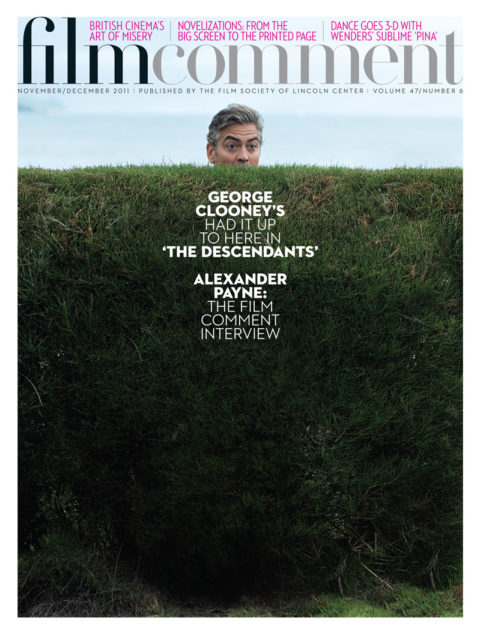
After sending up the Sixties spy genre in OSS 117: Cairo, Nest of Spies (06) and OSS 117: Lost in Rio (09), writer-director Michel Hazanavicius now turns, with a deceptively carefree manner, to another world of glamour and treachery: Hollywoodland, as the sign still read in 1927-32, the years during which The Artist takes place.
A film about the demise of silent cinema, and a wholly resonant love letter to the early history of cinema, this French production shot on old Hollywood studio lots is itself a (nearly) silent film, one that comes off as both respectfully authentic and playfully modern—Hazanavicius has certainly done his homework. In fact, his latest work flows with such smooth assurance that some might mistake it for mere romantic-comedy froth. But what makes the film fly is that instead of just basking in its technical glories—immaculate score and silent-movie re-creations, gorgeous black-and-white visuals presented in the now theatrically anachronistic 1.33:1 aspect ratio—it also tells a moving and funny story of advancement, retreat, loyalty, and, above all, love, fleshed out with irresistible, full-blooded characters. So while The Artist’s quotient of references and homages is high, getting all of its allusions is hardly a prerequisite. The film will be just as rewarding an experience for those old enough to remember the pre-talkie era as for those who have never seen a silent film in their life.

The Artist’s leading man is Jean Dujardin, who made Hazanavicius’s slick and obnoxious OSS spoofs bearable. And the good news is that this time he’s in a film worthy of his talents. With his Gene Kelly eyes, Fredric March appeal, and Douglas Fairbanks suaveness, Dujardin acts up a storm as George Valentin, a silent-era movie star whose pride and purist principles preclude his transition into the talkies. While his name obviously invokes Rudolph Valentino, Hazanavicius’s hero is more of a John Gilbert (without that actor’s miserable fate). Deprived of his voice, Dujardin relies upon his dazzling smile, and mugs exquisitely, but he also carries the film’s more sober moments, as George’s marriage and career collapse and he descends into penury, depression, and alcoholism. Dujardin can tug at your heart and break it too—not for nothing did he win the best actor prize at Cannes this May. And his furry little sidekick, perhaps cinema’s all-time greatest pooch—sorry, Asta—likewise took this year’s Palm Dog award. (Valentin is blessed with a second constant companion: his butler, Clifton, played with great tragic gravitas by James Cromwell.)
While the endearingly vain George falls for plucky acting and dancing ingénue Peppy Miller (Bérénice Bejo) at first sight, it may take audiences rather longer to warm to her. But Bejo, who was also Dujardin’s co-star in the first OSS film, proves to be a terrific performer herself, bringing a natural vivacity to her character that few contemporary actresses can summon up. Soul mates who become professional rivals, George and Peppy travel a rocky road to true romance. She embraces the talkies, and her career, for which she has him to thank, takes off; he, refusing to accept the new ways, falls deeper into obscurity. Nevertheless, their devotion to each other endures—made palpable by Dujardin and Bejo’s sparkling on-screen chemistry.
Like Singin’ in the Rain, a film The Artist resembles in more ways than one, The Artist is a rare instance of movie perfection. Anyone who thinks otherwise is clearly averse to feeling good.








